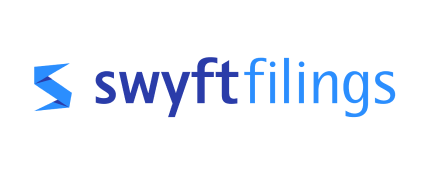When you run your own business as the only owner, which is called a sole proprietorship, tax time can seem overwhelming. Unlike working for someone else, where taxes are usually taken from your paycheck when you’re the boss, you must figure out what tax forms to fill out and how to file them properly. This guide will walk you through the tax forms you need for a sole proprietorship and help explain what each one is for in plain language that’s easy to understand.
What is a Sole Proprietorship?
First things first: a sole proprietorship is the simplest business structure. It means that just one person owns the business and is responsible for its debts and obligations. No legal distinction between the owner and the business affects how you file your taxes.
Tax Filing Requirements for Sole Proprietors
As a sole proprietor, you report all business income and expenses on your tax return. Here’s what you need to know about filing your taxes, including which forms to use:
- Form 1040: Individual Income Tax Return
Every individual in the U.S. who earns income over a certain threshold must file Form 1040 with the IRS. As a sole proprietor, this is where you’ll start. You’ll report your income, deductions, and credits on this form.
- Schedule C (Form 1040): Profit or Loss from Business
Schedule C is attached to your Form 1040 and is specific to sole proprietors. On this form, you’ll detail your business’s income and expenses. The result will show whether your business made a profit or took a loss during the year. This includes:
- Income: Money you earn from selling goods or services.
- Expenses: Costs like rent, supplies, and advertising.
After filling out this form, you will know your business’s net profit or loss, which you will report on your Form 1040.
- Schedule SE (Form 1040): Self-Employment Tax
If your business is profitable, you must also file Schedule SE, which calculates how much you owe in self-employment taxes. Self-employment taxes cover your required contributions to Social Security and Medicare. Generally, if your net earnings from self-employment are $400 or more, you need to file this form.
- Form 1040-ES: Estimated Tax for Individuals
As a sole proprietor, you don’t have an employer to withhold taxes from your paycheck. Instead, you should make estimated tax payments throughout the year, where Form 1040-ES comes in. This form helps you calculate and pay your estimated taxes quarterly. It’s important because it helps avoid penalties for underpayment at the end of the tax year.
How to File Your Tax Forms
Filing your taxes as a sole proprietor can be done electronically or on paper, though e-filing is encouraged for its ease and quicker processing time.
Steps for Filing:
- Gather Your Documents: Before you start, make sure you have all your financial records from the year, including income and expenses, receipts, and any records of estimated tax payments you’ve made.
- Complete Schedule C: List all business income and expenses to calculate your net profit or loss. This will determine how much of your income is subject to self-employment taxes.
- Fill Out Schedule SE: If your Schedule C shows a profit of $400 or more, you’ll need to complete Schedule SE to figure out your self-employment tax.
- Prepare Form 1040: Include your income and deductions, plus your business profit or loss from Schedule C. Attach any other necessary schedules and forms.
- Calculate Estimated Taxes with Form 1040-ES (if applicable): If you need to make estimated payments, use this form to calculate how much you should pay each quarter.
- Submit Your Forms: File your forms with the IRS by the appropriate deadlines. For most individuals, this is April 15 for the previous year’s taxes.
Tips for Smooth Tax Filing
- Keep Good Records: Maintain detailed and organized financial records. This makes it easier to fill out your forms and can be a lifesaver if you’re ever audited.
- Know Your Deductions: Many business expenses can be deducted to lower your taxable income. Understand what deductions you’re eligible for to save on taxes.
- Use Reliable Tax Software or a Professional: If you’re unsure about your tax situation, consider using tax software that guides you through filing. Alternatively, hiring a tax professional can ensure your taxes are done correctly and provide advice tailored to your situation.
9.8
- Special $39 pricing to form your company
- Well-established and trusted service
- Includes free registered agent service for 1 year ($125 value)
- Privacy is guaranteed so your info stays off public records
- Fast filing and processing times
9.6
Comprehensive LLC business formation services all in one place
- Starting at $0 plus state fees
- Protection from Personal Debts and Liabilities
- Access to dedicated customer support for the lifetime of your business
- Professional document preparation and filing
- Digital corporate kit access
9.4
The go-to service for all business owners looking to start an LLC, S Corp, or C Corp
- Pricing starts at $0 + state fees (although we recommend 99% of users choose the Gold or Premium plans)
- Free registered agent service for 1 year
- Easy-to-use dashboard
- No hidden fees and no contracts
- 24/7 fast and friendly customer service
If you’re considering changing your business structure to an S-corporation to save on taxes potentially, our partner, Swyft Filings or Bizee can make the transition smooth and stress-free. They specialize in setting up S-corporations, handling all the paperwork and legal details, and can also guide you in managing your new tax responsibilities. By partnering with one of these trusted services, you’ll get expert help to ensure your business is set up correctly and remains compliant with tax laws, allowing you to focus on growing your business without the headache of complex tax issues.
Conclusion
Filing taxes as a sole proprietor doesn’t have to be daunting. By understanding the forms you need and keeping good financial records throughout the year, you can tackle tax season confidently. Remember, paying attention to deadlines and making sure you’re withholding enough for taxes are crucial to avoiding surprises when you file. With some preparation and knowledge, you can handle your business taxes efficiently and accurately.







